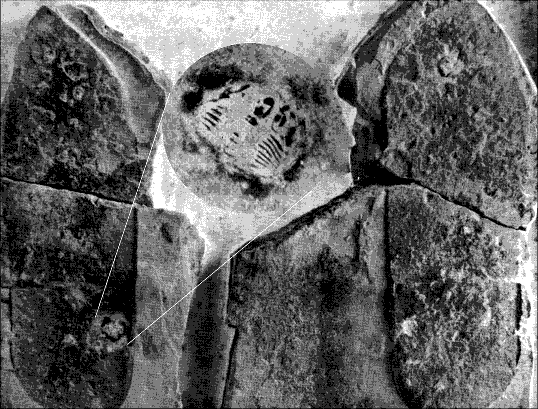65. Index Fossils
In the early 1800s, some observers in Western Europe noticed that certain fossils are usually preserved in sedimentary rock layers that, when traced laterally, typically lie above somewhat similar fossils. Decades later, after the theory of evolution was proposed, many concluded that the lower organism must have evolved before the upper organism. These early geologists did not realize that a hydrodynamic mechanism, liquefaction, helped sort organisms in that order during the flood. [For an explanation, see pages 203– 214.]

Figure 9: Humanlike Footprints with Trilobite. In 1968, 43 miles northwest of Delta, Utah, William J. Meister found this and other apparent human shoe prints inside a 2-inch-thick slab of rock. Also in that slab were obvious trilobite fossils, one of which was squashed under the “heel.” The 10-inch-long shoe print is at the left, and its rock mold is to its right. According to evolutionists, trilobites became extinct 240-million years before humans evolved. Notice how the back of the heel is worn, just as most of our shoes wear today. The heel was indented in the rock about an eighth of an inch deeper than the sole. Others have since made similar discoveries at this location, although this is the only fossil where a trilobite was inside an apparent shoe print.
Geologic ages were then associated with each of these “index fossils.” Those ages were extended to other animals and plants buried in the same layer as the index fossil. For example, a coelacanth fossil, an index fossil, dates its layer at 70,000,000 to 400,000,000 years old. [See Figure 7.] Today, geologic formations are almost always dated by their fossil contenta—which, as stated above, assumes evolution. Yet, evolution is supposedly shown by the sequence of fossils. Because this reasoning is circular,b many discoveries, such as living coelacanths,c–g were unexpected. [See “Out-of-Sequence Fossils” on page 14.]